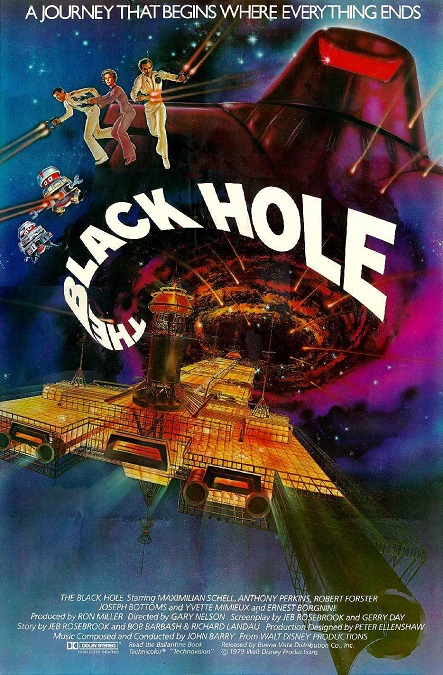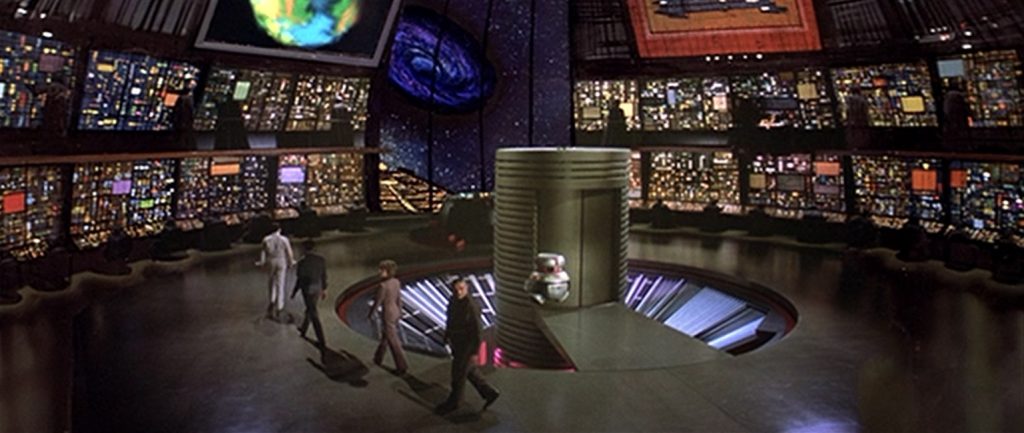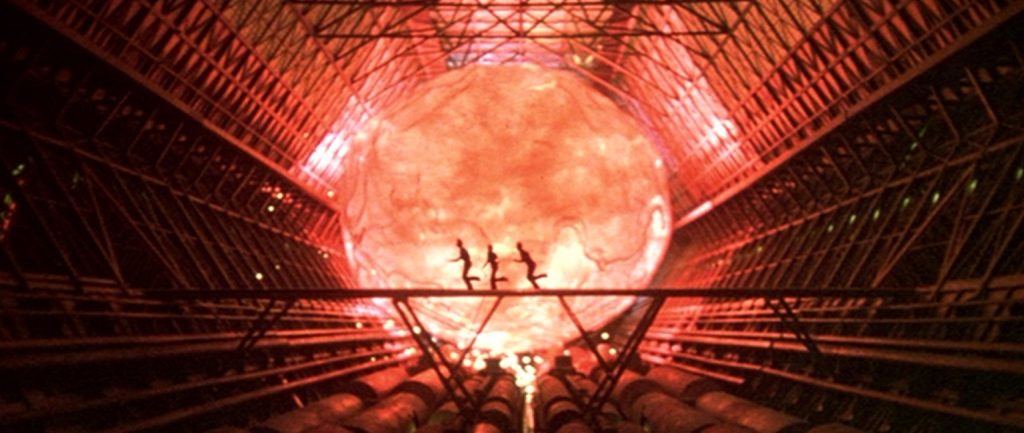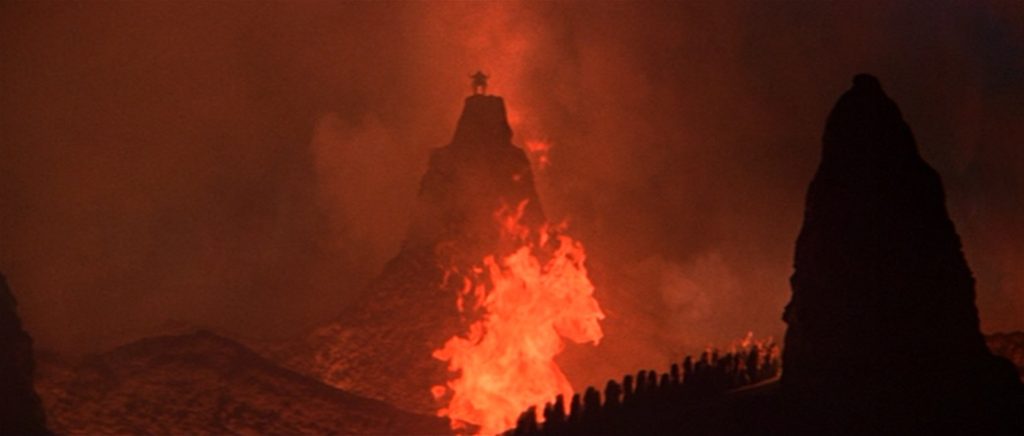



The Black Hole – 1979

I can completely understand why this movie didn’t win the Oscar for Best Special Effects. Yes, it did have a lot of cool effects that looked great, but it also failed to believably execute effects that should have been simple. The ones they got right looked fantastic, but the ones they got wrong were just so terrible and difficult to ignore! If any movie is ripe and ready for a modern remake, it is this one.
It is important to note three things about the film before looking at the special effects too closely. First is that this is a Disney film, and they went out of their way to provide a sense of family-friendly comedy or campiness to the film and its effects. Second, techniques like rotoscoping to remove flying wires were still new and unperfected. And third, they made a conscious decision to completely ignore things like science or even basic laws of physics. And as an unqualified fourth, the filmmakers were all on LSD, especially when they wrote the movie’s bizarre hell and heaven ending. It was probably one of the creepiest things in the whole movie.
Let’s start with the good effects. The black hole, itself, looked really cool! The effect was created by pouring viscous paint in a tank full of water that had a rotating fan at the bottom. This created the whirlpool effect. Then they played with things like color saturation, different exposures, the speed of the film, and multiple overlays. The result was a completely unearthly and fascinating effect! Next was the animated effects that looked more real than animated, things like the rocket thrusters on the various space ships, or the sparks being ejected from exploding robots. And the ridiculous giant meteor, which preceded the boulder in Raiders of the Lost Ark, that rolled down the Cygnus’s main corridor, looked great.
But aside from those few things and some awesome set designs, many of the most commonly used effects were just awful. In order to create the illusion of people floating in zero gravity or flying robots, there was a lot of wire work. Unfortunately, you could see all the wires! Not only were they completely visible, but they even bunched up the clothes of the people being suspended, showing us exactly where they were attached. You could also see the wires on the robots, and in one case, I could see the hook that fastened it to the robot’s shoulder.
And I hate to say it, but most of the blue-screening in the film was terrible. The lighting was such that you could see a clear white halo around the actors whenever a matted background was used. But then when they were showed them from a different angle, the halo vanished. It drew my attention away from the story.
And finally, there was the weird ending. The probe ship’s psychedelic journey through the wormhole in the center of the black hole, Dr. Rienhardt’s descent to a classic version of a fire and brimstone hell, his imprisonment inside his monster robot’s empty shell, and the heroes’ ascent through a mirrored passageway to heaven, was both haunting and beautiful. A very strange but well-executed, though enigmatic sequence of special effects, indeed!